Italian Countryside
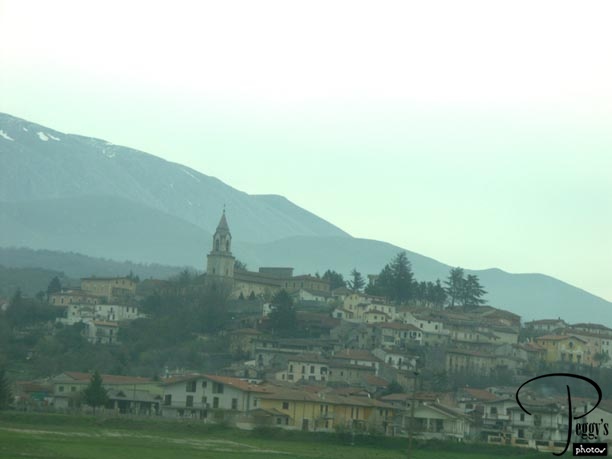
Arrivederci Roma. We would be back in Rome in 13 days time, after traveling over 2800 miles on our Trafalgar bus. Most of Rome was to be shut down today as Pope Benedict XVI was to be inaugerated. We left Rome’s near–empty streets to begin the rest of our Italian Adventure. You are now going to need to look at a map of Italy to follow our day–to–day itinerary. Today, we traveled from Rome (on the Mediterrean side of Italy) across all of Italy via the Abruzzi Mountains to the Adriatic side. When we reached the Adriatic Sea, we headed south to the Gargano Peninsula to Manfredonia. Italy is divided into regions and we were heading to the region of Pulgia (Apulia). On the way we saw the Italian countryside––this photo. Note that I took many of the photos of the Italian countryside from the bus and hence they are not very sharp.

Italian Countryside
Italian Countryside
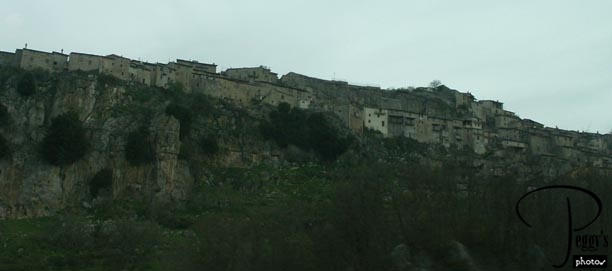
I was very much surprised as to how similar much of Italy looked like California as to its topography––mountains, hills, valleys, cliffs, etc. There were times when I thought I was home. But the land use (apart from the vineyards) in Italy is much different (large olive groves, for example) and we don’t have old medieval hills towns and forts, Roman ruins, or similar buildings and Italy is much much greener. The photo is of a medieval hill town.

Italian Countryside
Italian Countryside
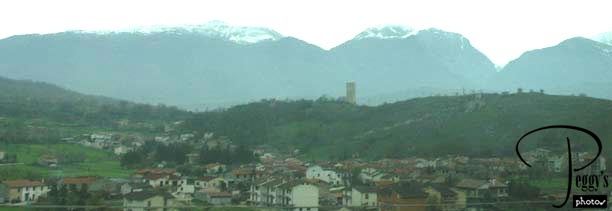
An Italian village and its fort. In medieval times, the Italian villages were always in fear in being attacked by one of their neighbors so many had forts for protection.

Italian Countryside
Italian Countryside
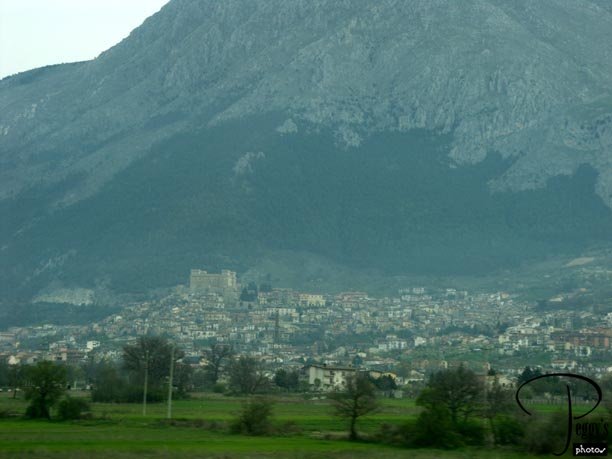
A village with a castle or fort.

Italian Countryside
Italian Countryside
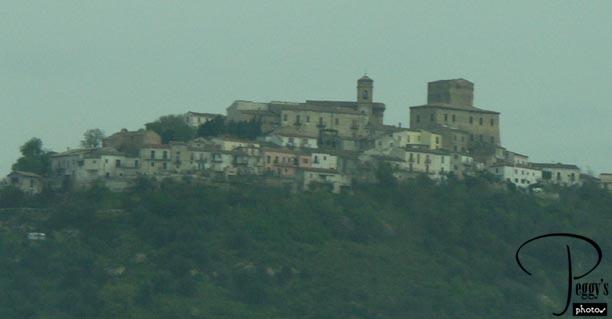
A village with both a church and a fort.

Italian Countryside
Lunch on the Road
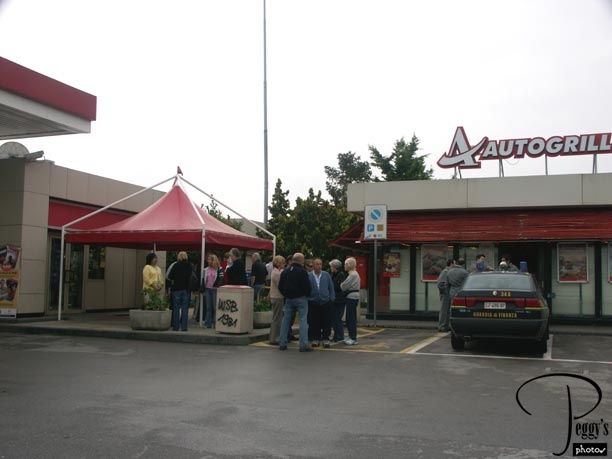
When we were on the highway at lunch time, we usually stopped at an Auto Grill such as this (or a similar place of another company). Here, you could buy very tasty sandwiches or pizza and also expresso, Cafe Americano, etc. Some even offered full–course meals or self–serve dishes. We also used these places several times a day for WC stops and most did not charge to use their facilities. When they did (as most of the public rest rooms in other spots did), the cost to use the toilet was from 20 to 50 cents (50 cents would be about U.S. 65–67 cents). You could also buy packaged cookies, candy, dry pasta, water, and just about anything else here as well. The policemen in the photo are the tax police who make sure that the stores and restaurants are giving their customers receipts for their purchases and so are truly reporting their income. The tax police also control the borders.

Lunch on the Road
Vineyard on the Adriatic
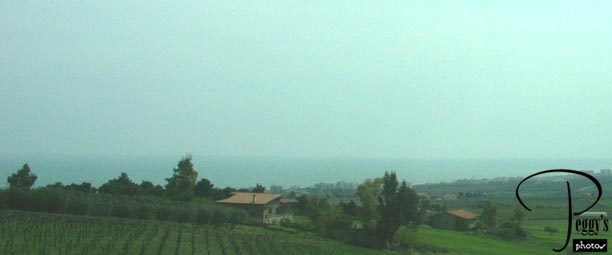
We have reached the Adriatic Sea. This farm has both a vineyard and an olive tree grove.

Vineyard on the Adriatic
Vineyard on the Adriatic

This photo shows a small personal vineyard, what you often see in the Italian countryside.

Vineyard on the Adriatic
Old Pilgrim Route
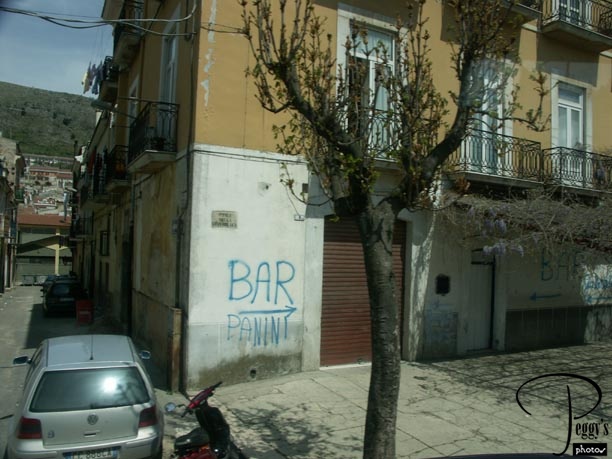
We have now gotten off the highway and are on the Old Pilgrim Route. I think that I took this photo at San Marco in Lamis, where a 16th century convent is located. (We only stopped at one of the shrines along this route––photos later.) I thought the photo was interesting.

Old Pilgrim Route
San Giovanni Rotondo
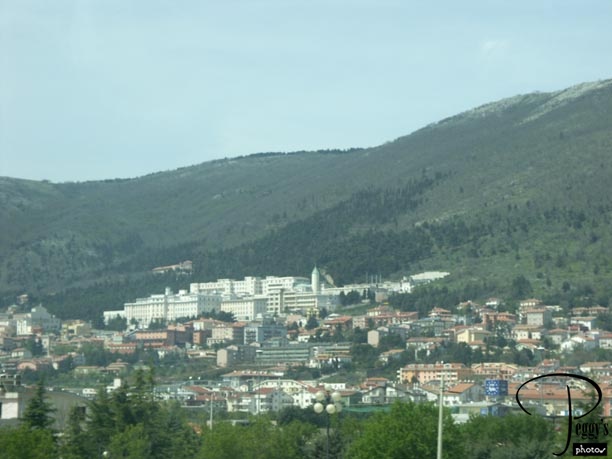
This is a major shrine in Italy and pilgrims go here in search of a cure for their ailments from Padre Pio (1887–1968), a miracle worker who is buried at San Giovanni Rotondo. We saw photos of Padre Pio in a number of churches in Italy. We also saw numerous tour buses that had brought pilgrims today to the shrine. The Filipino group on our tour had already visited here and told me that the shrine is located in the complex of white buildings up on the hill.

San Giovanni Rotondo
More Italian Countryside
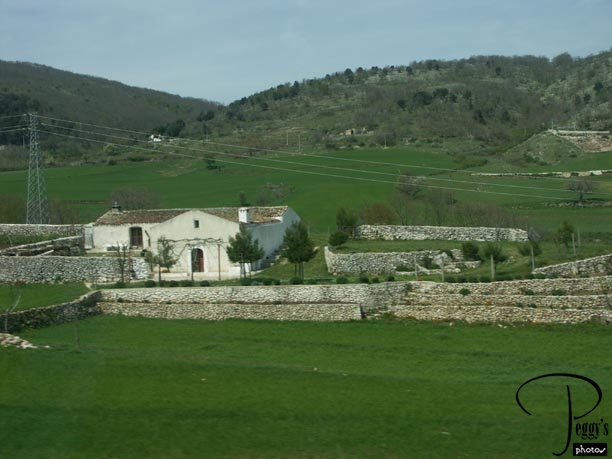
We saw many of these rock walls in this area. They are used to delineate property lines. The rocks are placed one on top of another by expert rock layers. No mortar or cement is used to hold them together.

More Italian Countryside
Monte Sant’ Angelo
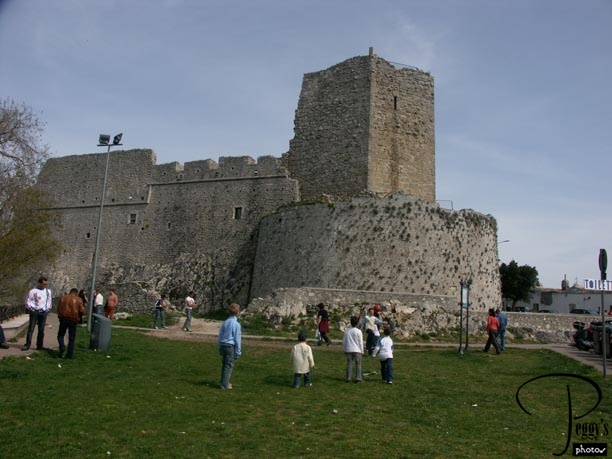
We traveled up a side of a mountain to an important Italian shrine located on the top of it––Monte Sant’ Angelo. In 493, the Archangel Michael appeared here to the Bishop of Sipontum and, hence, this has become a religious shrine.

Monte Sant’ Angelo
Monte Sant’ Angelo
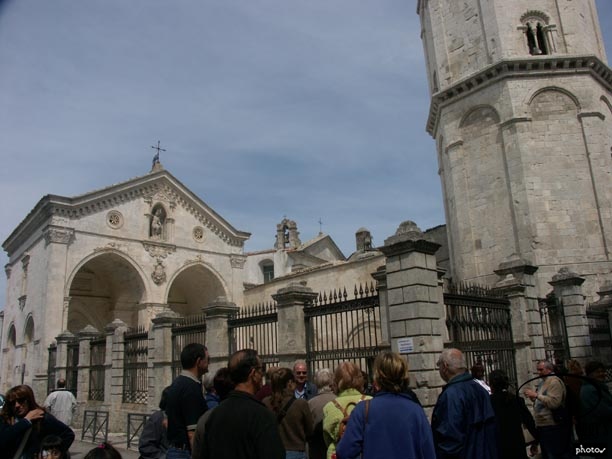
Our tour group getting ready to visit Monte Sant’ Angelo. Paolo, our tour conductor, is in the photo––he is the one facing us with the sunglasses on.

Monte Sant’ Angelo
Monte Sant’ Angelo
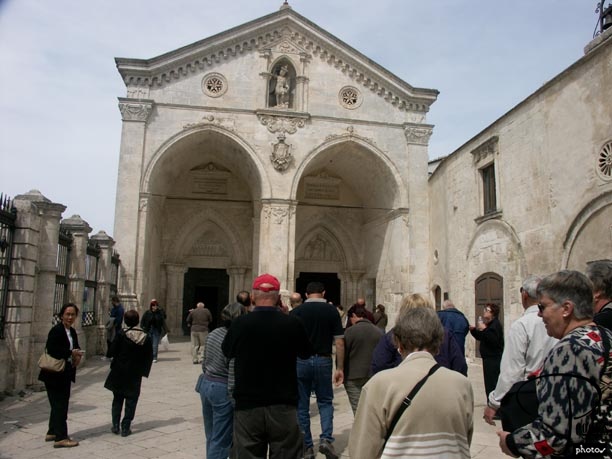
Our tour group entering the church.

Monte Sant’ Angelo
Monte Sant’ Angelo
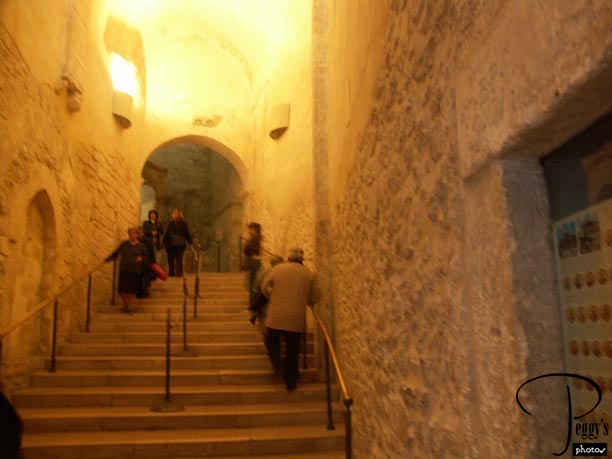
Stairway to the grotto where Archangel Michael appeared.

Monte Sant’ Angelo
Monte Sant’ Angelo
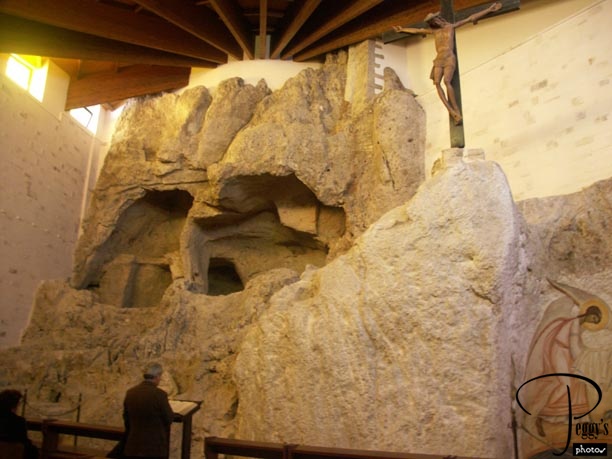
Part of the grotto.

Monte Sant’ Angelo
Monte Sant’ Angelo
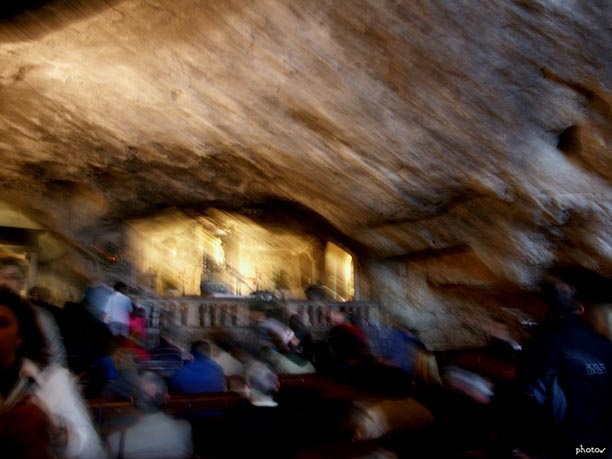
The more important part of the grotto and not a very good photo.

Monte Sant’ Angelo
Monte Sant’ Angelo
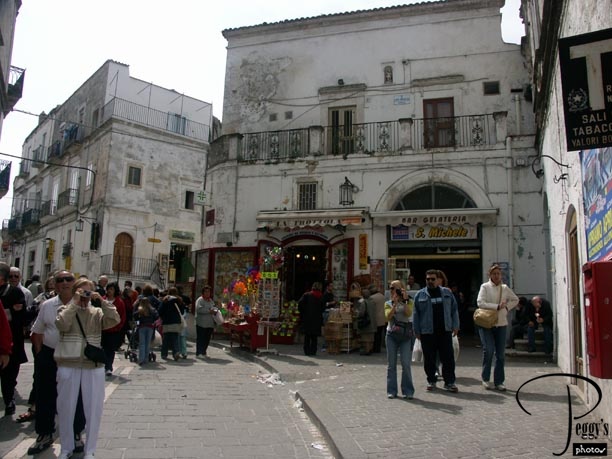
The town of Monte Sant’ Angelo. We next walked around the town, along its sloping streets. There were many Italians visiting the town on this Sunday afternoon. Paolo had told us that there are many Italian dialects and here I heard the Italian that those of us originally from New York had heard while we were growing up––quite distinctive from the Italian I heard in Rome. Even the Italians here looked much like the Italians in New York and the Italian men were also much more handsome here. I note this because the Italian side of Eddie’s family came from near this area and this is probably one of the reasons that Eddie was so good–looking.

Monte Sant’ Angelo
Monte Sant’ Angelo
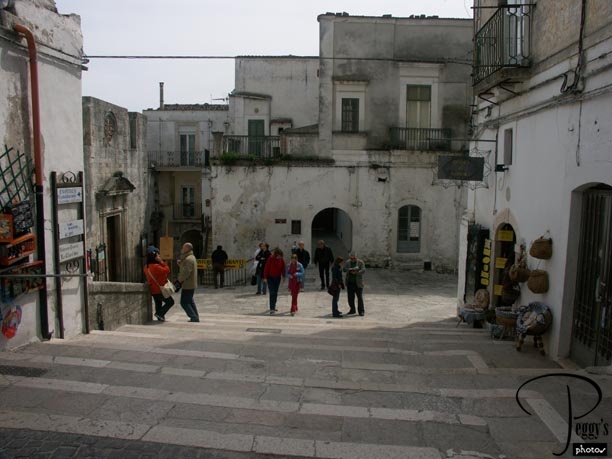
Another view of the town.

Monte Sant’ Angelo
Monte Sant’ Angelo
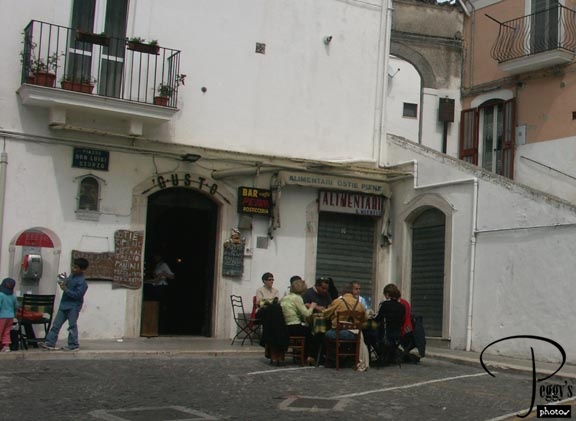
Sidewalk dining.

Monte Sant’ Angelo
Monte Sant’ Angelo
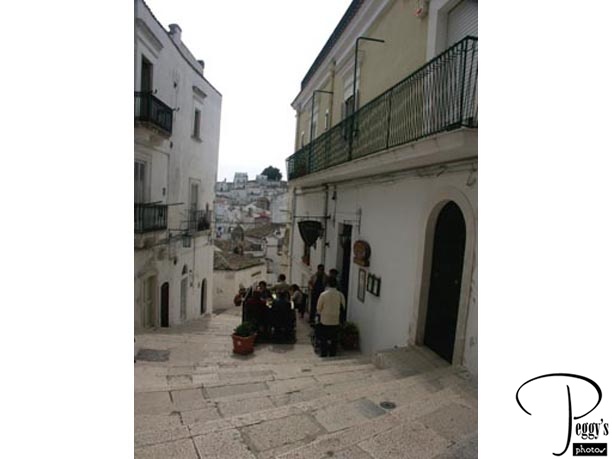
More sidewalk dining.

Monte Sant’ Angelo
Monte Sant’ Angelo
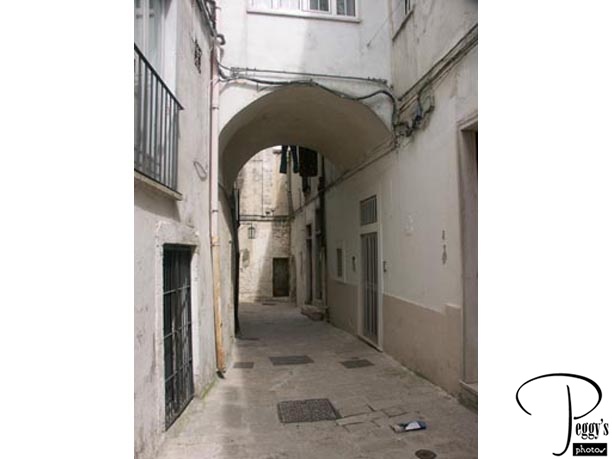
Note the passageway between the two apartment buildings at the middle top of the photo.

Monte Sant’ Angelo
Monte Sant’ Angelo
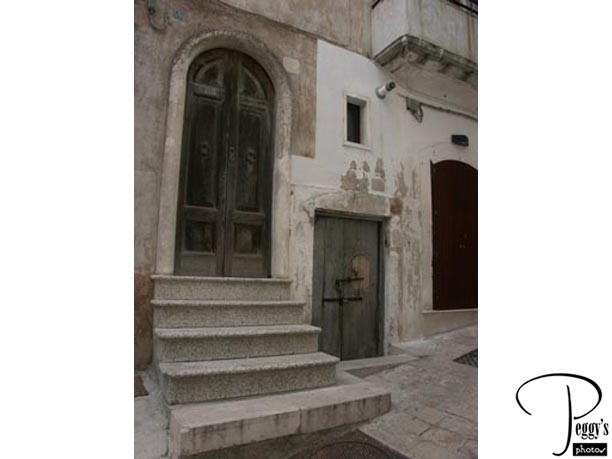
Old doors.

Monte Sant’ Angelo
Monte Sant’ Angelo
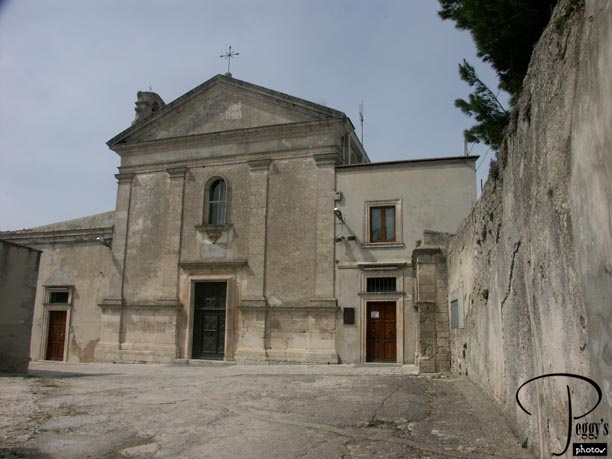
Back of the church.

Monte Sant’ Angelo
Monte Sant’ Angelo
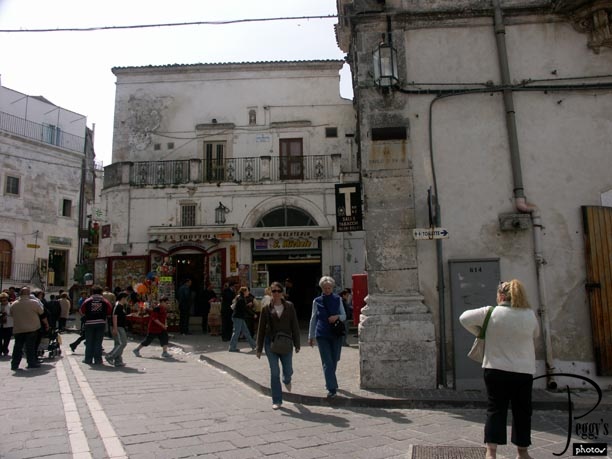
Another view of the town.

Monte Sant’ Angelo
View of the Adriatic
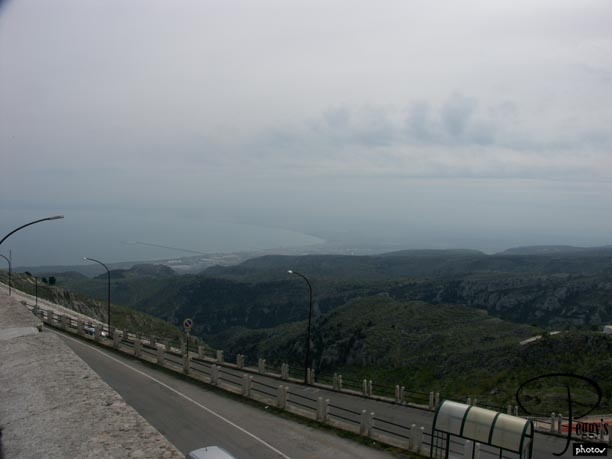
View of the Adriatic Sea from Monte Sant’ Angelo.

View of the Adriatic
Going Down the Mountain
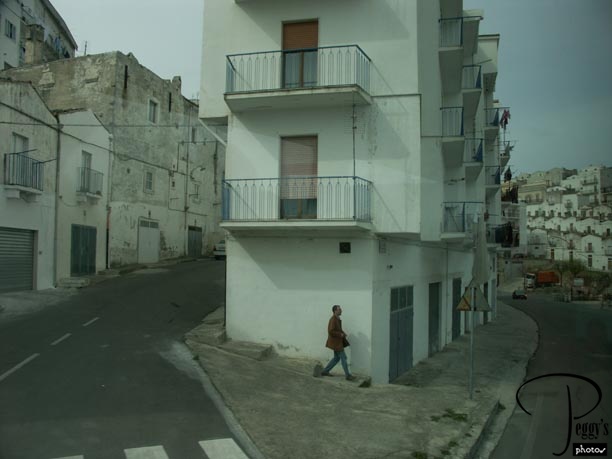
We started our descent down the mountain past these houses.

Going Down the Mountain
Going Down the Mountain
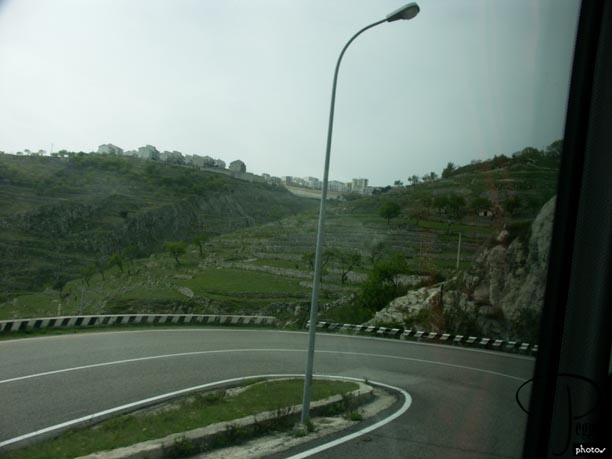
The road down this side of the mountain was much steeper and the bus had to negotiate many of these hairpin curves, done excellently by our driver Mario.

Going Down the Mountain
Manfredonia
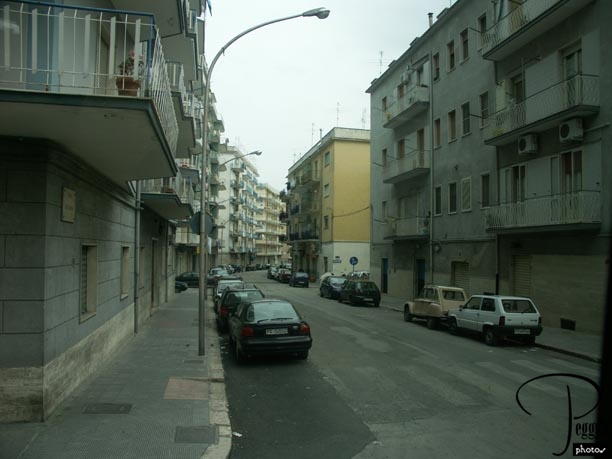
We entered the town of Manfredonia. You see this type of apartment house all over Italy––not the most attractive design. However, 70% of Italians own the house or apartment that they live in.

Manfredonia
Manfredonia

We were to spend the night here at a hotel right on the Adriatic Sea. In front of our hotel, there was a large police presence. The hotel was right near a soccer stadium and the game was about to end. There is such strong rivalry between towns that each team’s fans have to sit at opposite sides of the stadium. When the game is over, the police escort the visiting team out of town. I missed most of the action as I was talking to Bank of American on the phone trying to figure out why my ATM card didn’t work when I had tried to get Euros out of a bank machine earlier in the day. I was told that it really got exciting when policemen with machine guns rolled by in jeeps past the hotel. (The reason my ATM car didn’t work was because the machine that I was using had run out of Euros.)

Manfredonia
Manfredonia
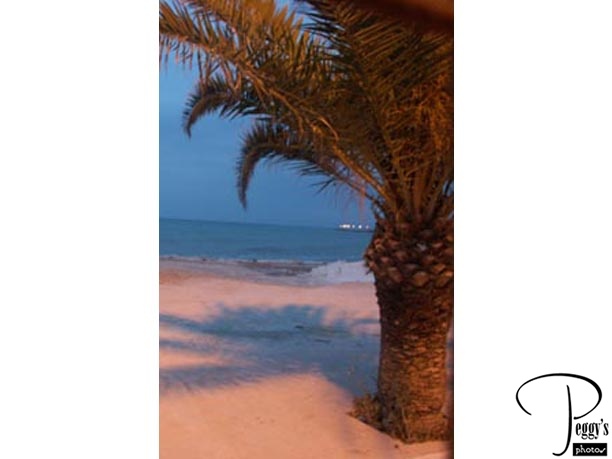
Palm tree on the Adriatic Coast at sunset. We had dinner at our hotel. When we dined at our hotel, we had four–course dinners––usually appetizer or salad; pasta and more pasta (called the first course); meat or fish with potatoes and vegetables (called the second course); and desert with coffee or tea. Sometimes, the wine was free. About Italian food––the pasta and main dishes are not like the Italian food that we are used to in the U.S. as we are used to much spicier Italian dishes and much heartier meat slices, so some of the food you have in Italy can be quite disappointing (though this is a generalization and we did have some very excellent meals). Never fear, they do excel in breakfast pastries, other pastries, pizza, salads, and sandwiches and you are not going to go hungry. Another note: Eddie’s mother’s family had an odd Italian last name and I was curious as to whether part of this family was still living near this section of Italy. I found a phone book of the area that they had come from and found many listings with this same last name. Frank, one of our tour members who was born in Italy but who had become an Austrialian and who spoke Italian) offered to call someone on the list for me. I declined as I had forgotten to bring along the names of the people who would have been common relatives. I’ll pass this family update along to one of Eddie’s relatives who may want to follow this up.
